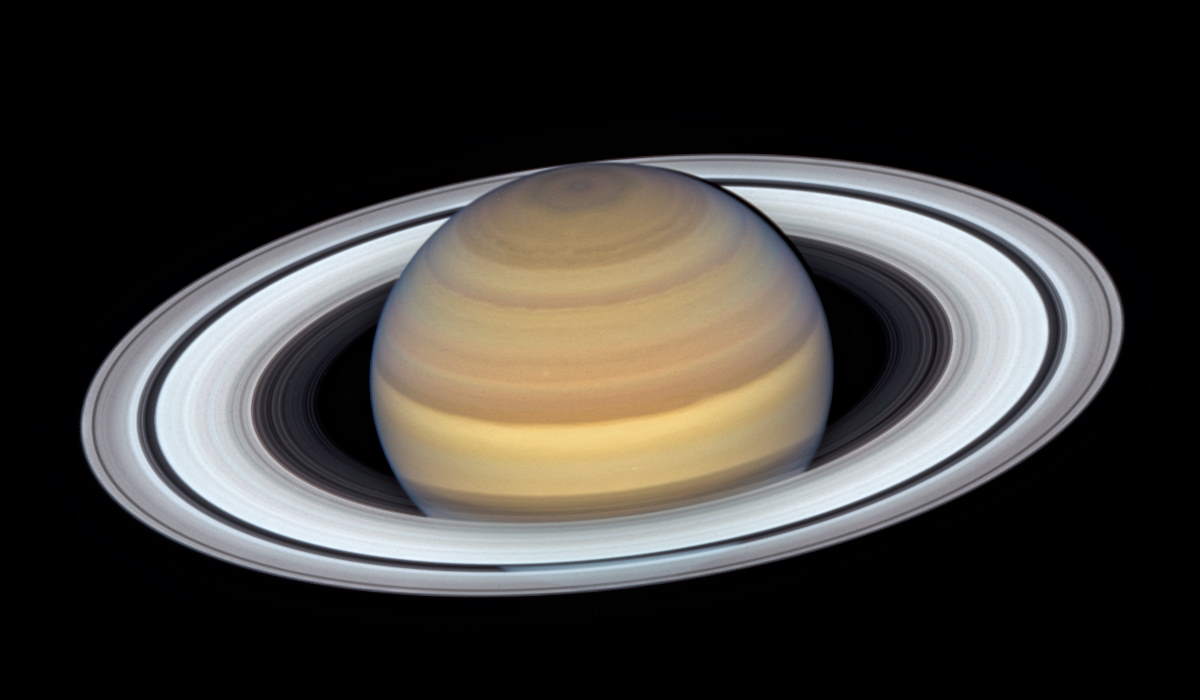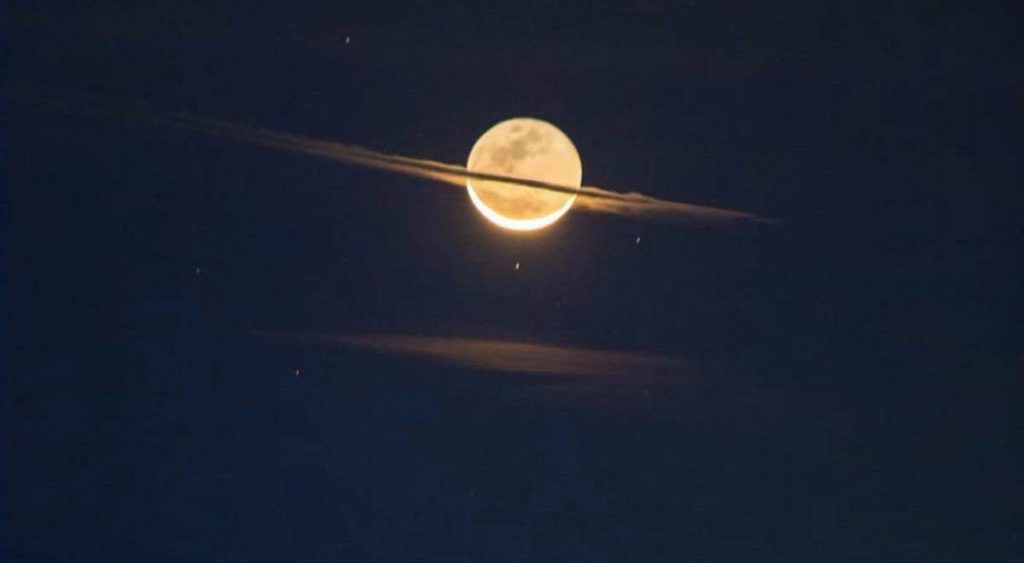The photos of Saturn, with its majestic rings, are a testament to the breathtaking beauty of our solar system. Now, imagine if Earth had a similar feature! The sight of a vibrant ring system surrounding our planet would undoubtedly leave us in awe. The striking contrast of the rings against the blue and green of our planet would offer breathtaking views, and the endless possibilities for photography and art would be endless. While Earth’s unique geological features make it stand out in our solar system, it’s hard not to imagine how incredible our planet would look with a set of rings like Saturn’s.
What Earth would look like with rings like Saturn?
The rings of Saturn are made up of countless particles of ice and rock, ranging in size from tiny grains to massive boulders. These particles orbit the planet, creating a spectacular visual display that has fascinated astronomers and space enthusiasts for centuries. If Earth had a similar ring system, it would be an incredible sight to behold. Imagine seeing the rings shining brightly in the night sky, reflecting the light of the sun, and casting a soft glow on the planet below. The sheer magnitude of such a sight is hard to comprehend, but it’s safe to say that it would be an unforgettable experience for anyone lucky enough to witness it.
Video: What Earth would look like with Saturn’s rings
In the video created by Hashem Al-Ghaili, you can see what Earth would look like if it had rings like Saturn, and what would be their effects on Earth.
Video: What Earth would look like with rings like Saturn
The video below also explores the possibilities. According to the creator, the ring views from the Earth’s surface were created according to the location’s latitude, northern or southern hemisphere, and the viewer’s orientation. The size of the rings was calculated respecting the Roche limit for the Earth (see notes 1).
The rings would be aligned with Earth’s equator, and they would appear across the sky from east to west. Near the equator, the rings would appear thin and perpendicular to the horizon. But far from the equator, they would appear much wider and close to the horizon.
The rings would appear very bright in the night sky because they would reflect the Sun’s light, they are even more reflective than our Moon.

There would be also a shadow of the rings. The position of the shadow would change throughout the year. If the rings were in the plane of the equator, like in the video, the shadow would be a thin one on the equator during the vernal equinox.
Over the next three months approaching the southern hemisphere winter solstice (June), the ring shadow would move south and get wider, reaching the southernmost position and becoming the widest at the solstice. Over the next three months, it would trace a path back to the equator. The other half of the year, it would trace a similar path in the northern hemisphere around their winter solstice (December).
The equatorial shadow during the equinoxes may actually disappear if the rings are too thin to actually block the sun completely. Also, it’s not the rings that would appear to change position in the sky, it’s the usual changing position of the sun as the seasons change that would cause this.
How can we create rings around Earth like Saturn?
The “What If” channel published a video titled “What if Earth had rings like Saturn?”. In the video, the narrator also discusses how we can create rings around Earth.
To give our planet rings, the easiest (!) way is destroying the moon. But, this would have catastrophic consequences. The moon plays a crucial role in Earth’s ecosystem and has been a constant companion in our planet’s history. It stabilizes our planet’s rotation, causing regular cycles of day and night, and moderates the tides that are essential for many marine species.
Additionally, the moon’s gravitational pull on Earth helps to keep our planet in its stable orbit around the sun, preventing it from hurtling off into the depths of space. If we were to destroy the moon, we would lose all of these critical functions, resulting in catastrophic changes to our planet’s climate, geology, and ecosystem. Therefore, while having rings like Saturn may be a tempting thought, it’s important to consider the consequences before taking drastic actions that could potentially lead to the loss of life on Earth.
The rings would also disrupt the internal navigation systems of some animals. They would also affect photosynthesis because they would block the Sun, albeit partially. This would badly affect our oxygen supply.
Also, because of the shadow created by the rings, the temperature on Earth would fall dramatically. The world would be almost inhabitable.
The rocks making up the rings would also create a barrier against our Space Exploration.
The rings would not last forever
Like Saturn’s rings, our Earth’s rings would not last forever.
Saturn’s rings are made up of countless particles of ice and rock, ranging in size from tiny grains to massive boulders. While they may appear to be solid, the rings are actually very thin, with a thickness of only a few hundred meters. Over time, the particles in the rings collide with one another, causing them to break apart and form smaller particles.

Additionally, the gravitational pull of Saturn’s moons can tug on the particles in the rings, causing them to scatter and collide with one another. As a result, the rings are slowly being eroded and will eventually dissipate into space. While it may take millions of years for this process to be completed, it is inevitable that Saturn’s rings will not last forever.
Saturn’s rings are relatively new, having formed between 10 million and 100 million years ago. Scientists estimate that in about 300 million years, they will be gone.
Notes
- The Roche limit is the minimum distance that a celestial body, such as a moon or a planet, can approach another celestial body without being torn apart by tidal forces. The Roche limit is determined by the balance between the gravitational forces pulling the body inward and the tidal forces pulling the body outward. If the body gets too close to the larger object, the gravitational forces become stronger than the body’s self-gravity, and the body is stretched into a long, thin shape known as a tidal tail. As the body moves closer to the larger object, the tidal forces become stronger and can eventually overcome the body’s self-gravity, causing it to disintegrate into smaller pieces. The Roche limit is an important concept in astronomy and is used to explain various phenomena, including the formation of planetary rings and the breakup of comets.
- Moon Landings: All-Time List [1966-2025] - February 2, 2025
- What Is Max-Q and Why Is It Important During Rocket Launches? - January 16, 2025
- Top 10 Tallest Rockets Ever Launched [2025 Update] - January 16, 2025

